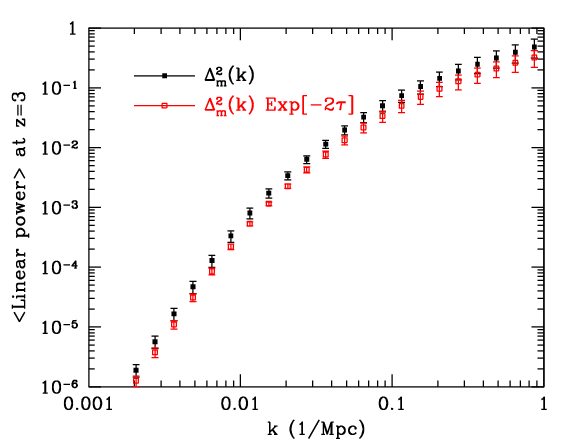
The linear theory matter power spectrum at z=3, as predicted from the
WMAP 1st year data. The error bars indicate the standard deviation
computed from the distribution of 6 parameters in a model fit to the
WMAP data using the MCMC chains available at
http://cosmologist.info/cosmomc.
Note that once the major degeneracy with the optical depth (tau) is removed
the amplitude and shape of the linear theory power spectrum, in physical units,
at z=3 is very well predicted from the WMAP data. The evolution to z=0
depends on the constituents of the universe below z=3, e.g. on the dark energy
equation of state, and the comparison with local surveys requires a translation
from 1/Mpc to h/Mpc units.
The constraint on the power spectrum is tightest in the acoustic peak regime,
near k=0.02/Mpc.
Currently the best constraint on dark energy from the CMB comes from the
distance to the last scattering surface (z~1100). This is known to about
3% from the 1st year WMAP data, with the uncertainty being dominated not
from the measurement of the peak positions (known to 1%) but from the
uncertainty in the physical size of the sound horizon at last scattering.
This latter uncertainty is dominated by our uncertainty in the physical
matter density, which is currently about 8%.
Once we measure the higher peaks and damping tail (e.g. with Planck) we
should reduce the uncertainty on the matter density to 0.9% and the distance
to last scattering to 0.2%. At that point the CMB will provide a strong
constraint on dark energy which is complementary to supernovae or other low
redshift probes.

